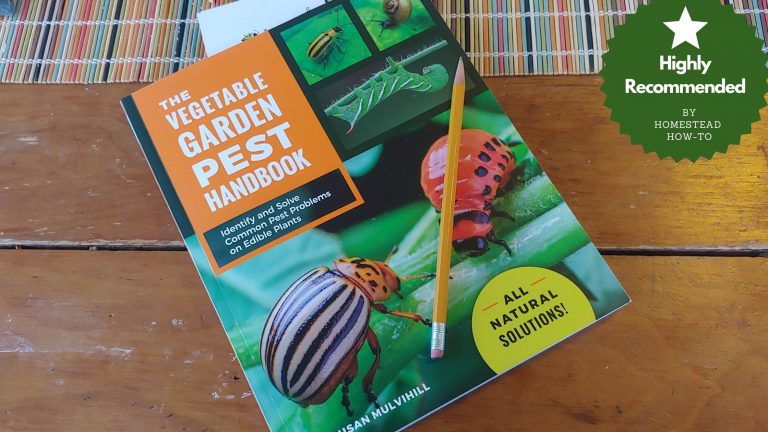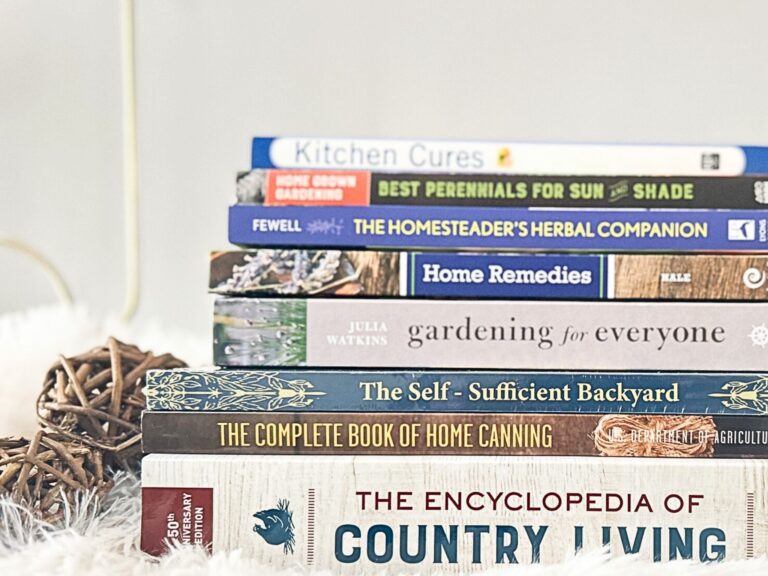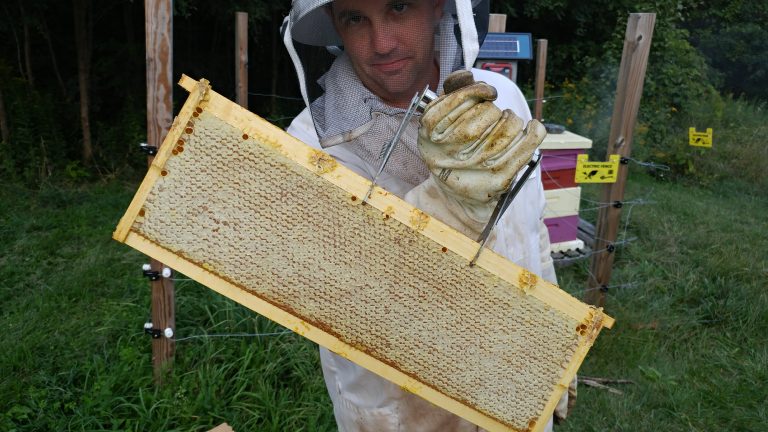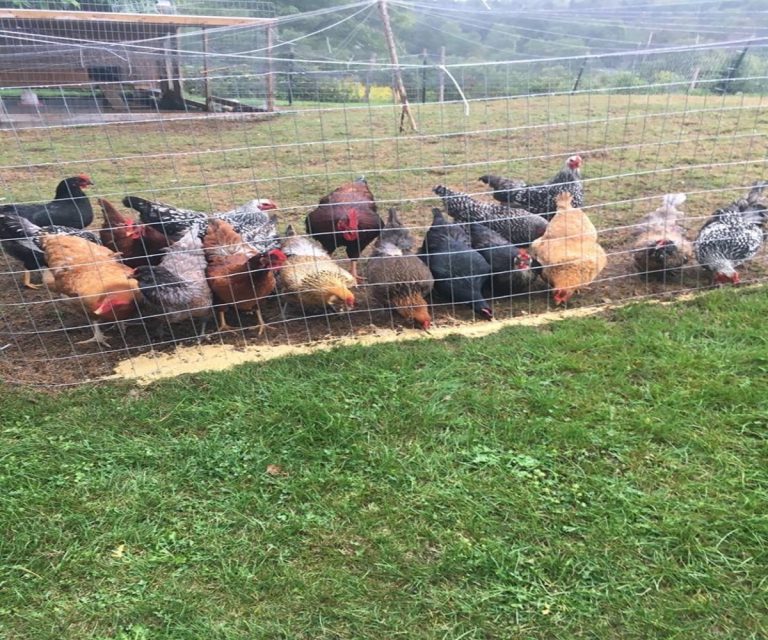This post may contain affiliate links.
Modern homesteading often means wearing multiple hats. Like most families, we have regular household chores to do, a job or two outside of the home, and responsibilities of caring for children.
But homesteaders (even just part-time ones like us) also have things on their to-do list related to vegetable gardening, animal chores, land maintenance, or home repairs that others might not.
I’m not trying to argue that we are more busy than folks who choose other lifestyles – everyone has a to-do list – but that we have demands that are unique to this way of life and call for unique solutions.

Tip 1: Create an Annual/Seasonal To-Do List
Whether you grow your own vegetables, tap trees for maple syrup, or have a working forest or an orchard, chances are you have tasks that you repeat on a regular basis. Why rely on your over-tapped brain to keep track of those things?
Instead, consider creating a master list of the chores that you need to accomplish each year and the approximate time of year when you need to accomplish them. You can do this electronically with any one of the many apps that exist for to-do lists and reminders, or you can create your own version using something as simple as a word document or excel spreadsheet.
You could also consider something like a “Gantt Chart” which is basically a spreadsheet with tasks in the vertical column and time in the horizontal column. It allows you to get a visual image of what your chores look like when they are all mapped out together over the course of a year or a season. Here’s how to create a simple Gantt Chart in Excel.
Likewise, a quick google search will bring up a number of handy templates and chores lists by season that can help to get you started. For example, on our sister site we’ve published a Fall Gardening schedule that can be adapted for your time zone; this could become part of your annual gardening work plan. Just remember that each homestead, each climate, and each situation is different.
There are also some great resources you can invest in for planning purposes. Designed specifically for vegetable gardening, the Week-by-Week Vegetable Gardener’s Handbook from Storey Publications is a great resource for staying on track. I was lucky enough to receive a review copy of this publication and I was incredibly impressed. The first thing you do is enter your date of typical last frost and then everything builds from there so that the book is personally suited to your garden zone.
Whatever approach comes naturally to you, make sure that it is something you can edit, adjust, and refer back to you for many years in the future. One afternoon of creating the plan can benefit you for many years to come!

Tip 2: Keep a Garden (or other task) Journal
You know those tasks you repeat each year? You also learn something from them every year, and who wants to learn the same tough lesson twice? A garden journal is a great way to keep track of successes and failures and things you want to keep in mind for the next year.
A garden journal is also a great way to track your activities and results each year. For example, how many heads of garlic did you plant last year, and did they last you all year long? (here’s our article with growing a year’s worth of garlic, by the way!) Or what kind of weather did you have in the spring and does that effect your apple harvest in the fall?
Likewise, you can use your garden journal to track where you’ve planted things. This can be useful if you want to use rotations in the garden, or if you plant perennials and want to remind yourself what the name of the plant was when it pops up in the spring.
A garden journal can be as simple as a spiral-bound notebook (we use a heavy duty hard-cover one that won’t easily get lost or damaged), or something more fancy like this pre-formatted Gardener’s Log Book from the New York Botanical Garden.
You may have other tasks that would benefit from a journal as well. For my husband’s birthday, I bought him an official beekeeping log book as well as a blank journal for our beekeeping records. We want to get better at keeping our bees healthy. Tracking what we need to do each year as well as what we learn is a huge part of success.

Tip 3: Use Dry Erase Boards for Planning
One of the best investments I have made in the last year was a magnetic seven-day dry erase board for our refrigerator. On it, we not only write our family’s schedule and commitments, but also our meal plans for the week. We use multi-colored dry erase markers for different categories (kids’ schedules, tasks, meals).
This is huge for folks who grow their own food. We want to have as little waste as possible and we need to remind ourselves of what we need to use. If we know we have 2-3 cabbage in the fridge and eggplant in the garden, we’ll plan for haluska and eggplant parmesan that week. Likewise, we can make good use of the food we have preserved and frozen if we schedule out when we are going to use it.
We typically spend about a half-hour each Sunday writing down our schedules for the week and our meal ideas. We don’t always do the exact meal on the exact night it was planned, but we always have a list of ideas and we can juggle as needed.
We also happen to have an easel with a dry erase board (the kind you buy for budding young artists). When our daughter isn’t drawing on that we often write up the weekend’s to-do list and make our way through it as a family. It will include things like stacking wood and mulching the garden, but also fun things like “go for a hike” or “ride bikes for cider slushies” so that we have rewards as well as work!
Our eventual goal is to build a garden shed with an overhang and put a dry erase board right out in the garden to keep track of what we want to get done on a regular basis.
—
Staying organized can help you to achieve your self-sufficiency goals. None of these methods are fool proof – they are only as good as what you put into them, but they are some of our favorites that have stood the test of time.
What works for you to stay organized? We’d love to continue to build our list of strategies 🙂

Carrie Williams Howe is an educational leader by day and an aspiring homesteader by night and weekend. She lives on a small homestead in Vermont with her husband, two children, and a rambunctious border collie. She blogs about her family's homestead life at The Happy Hive.






